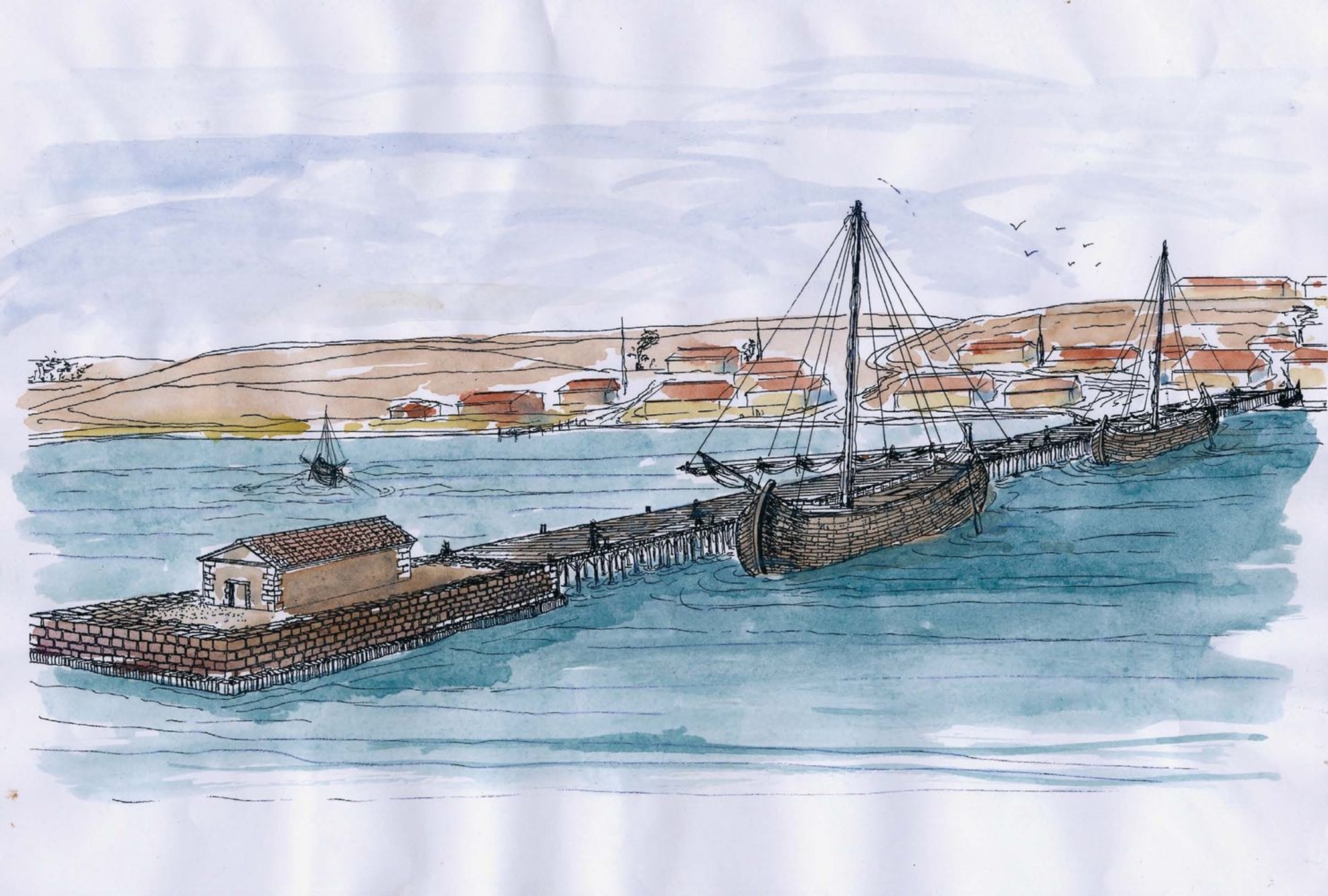
- Home
- Exploring the shoreline
- Ports and harbours
- Port de Fos
The Gulf of Fos contains the remains of a harbour established by the Romans at the entrance to the Marius canal, the latter dug in 102 BC to give ships a safer route into the Rhône river. It was the gateway to the Mediterranean and the north of the empire. The harbour, essentially an outer harbour for Arles, disappeared at the end of the classical period.
From the first dives...
This rich archaeological deposit lies under several metres of water but was already known in the seventeenth century from Greek and Latin sources. The site was comprehensively plundered in the early days of SCUBA diving (circa 1950) and thousands of objects were retrieved; however the difficult conditions (very poor visibility, complex situation at the land/sea interface) meant that little scientific research was undertaken. Despite the discovery in 1964 of submerged constructions, archaeologists under-exploited this important site for many years.
…to the Fossae Marianae research programme
Since 2013 new geophysical surveying techniques, such as acoustic mapping, have been used on the Fossa Mariana as part of a multidisciplinary research programme on the site. These techniques quickly revealed the presence of a large monumental complex spread over eight hectares at a depth of three or four metres. Subsequently, archaeologists making excavations and test pits in various parts of the site have identified pilae, perhaps a necropolis, warehouses, a harbour dump, and more. Current research not only involves going back over the archaeological findings in the Port of Fos, but also focuses on retracing the famous Fossa Mariana or ‘trench of Marius’ which undoubtedly cut through what is now the Vigueirat marshes to connect Fos to Arles.






